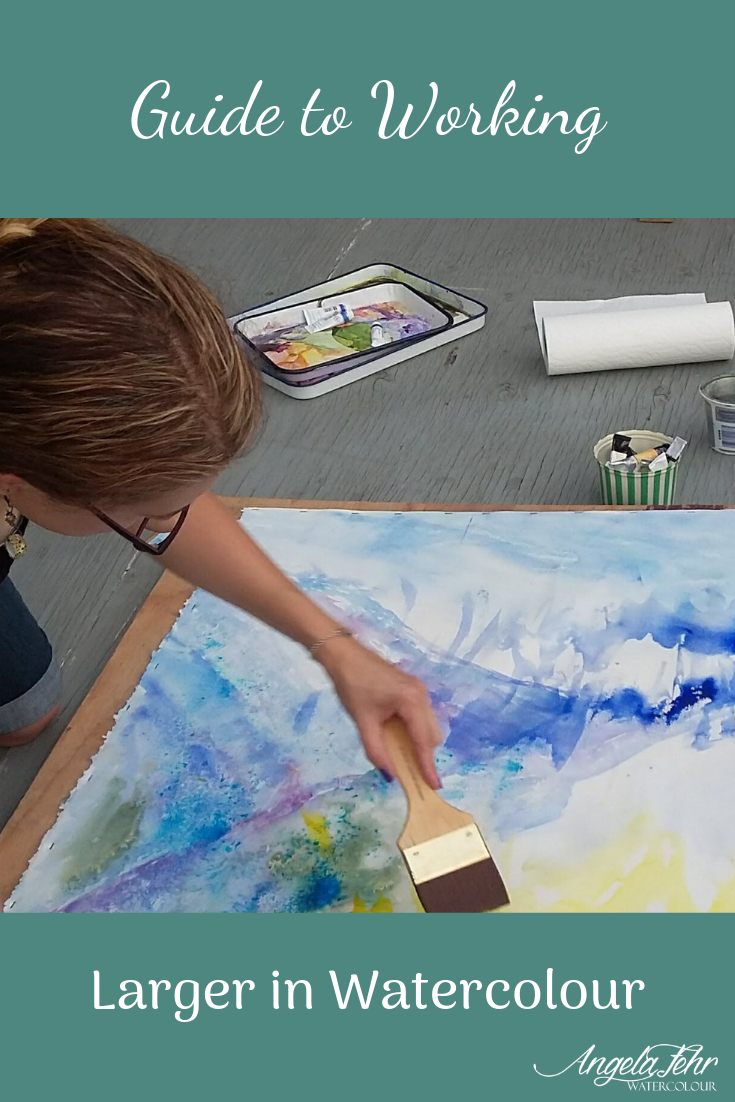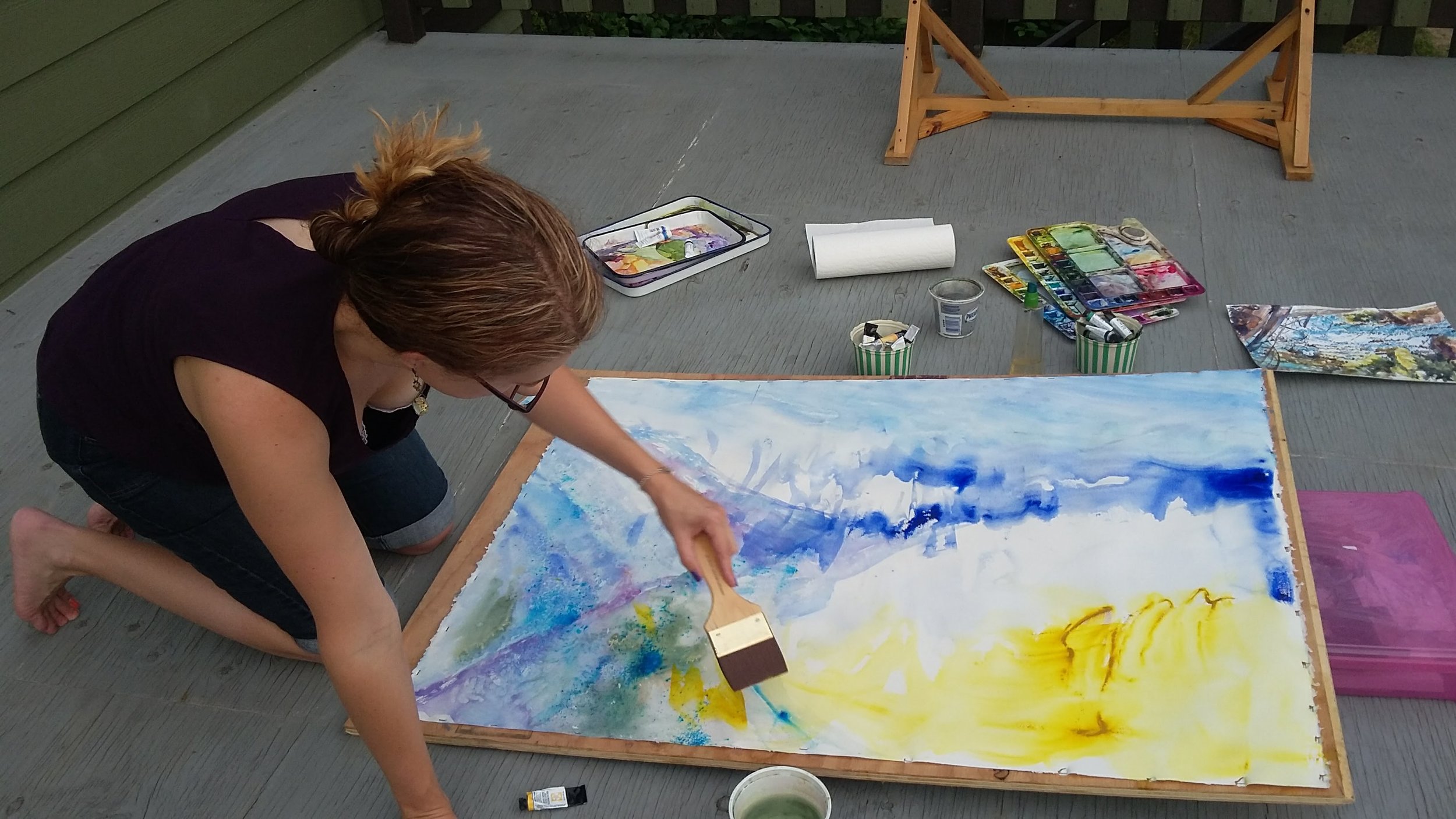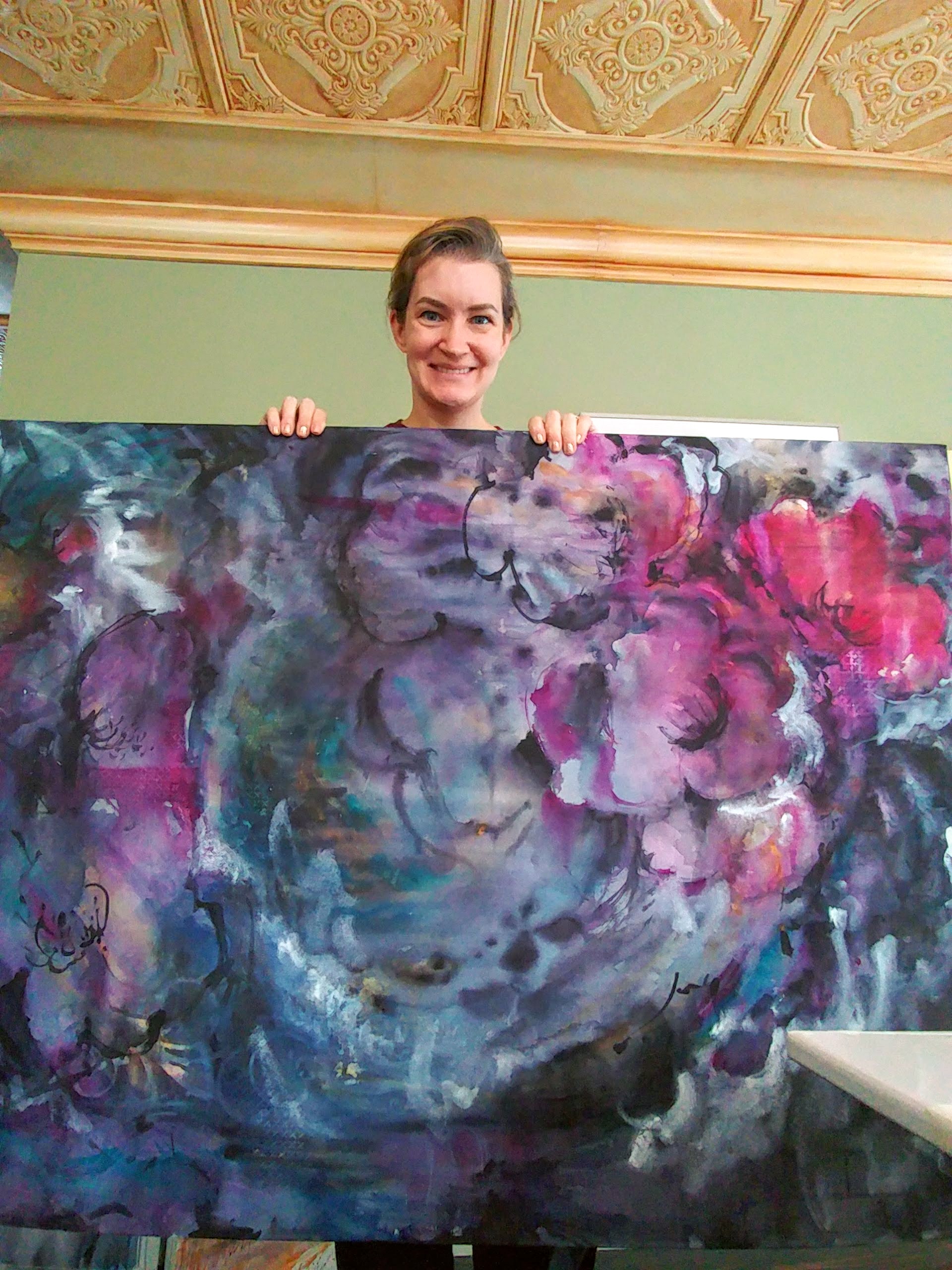Guide to Working Larger in Watercolor
When you’re working in watercolor, a large painting is usually quite a bit smaller than what’s considered large in paintings on canvas. The largest common size for watercolor paper is 22 x 30 inches, so that’s one limitation. Watercolor brushes are scaled for smaller size paintings as well, and even palettes usually have small wells that won’t accommodate a large brush. All reasons why watercolor painters tend to work small.
Small paintings matter!
And that’s okay! While a painting’s monetary value might increase as size increases, it’s significance does not. There are watercolor artists who are highly esteemed whose paintings are smaller than 12 inches on any side, and are still winning awards, writing books and creating just the most beautiful gems of art. Before you start painting larger, ask yourself why. If you are hoping that it will make your paintings more important in some way, I would encourage you to reevaluate how you define a “worthy” painting. Painting larger does not automatically make your painting better.
Ambitious Goals
I used to grab a full sheet of watercolor paper as soon as I started thinking of a new subject to paint. I wanted to make it big, expressive and expansive; that painting was going to be a masterpiece! I ruined a lot of watercolor paper that way. These failures taught me to slow down, scale back, and start by exploring a new subject in a smaller size, working out my plans in studies before I ever attacked that full sheet masterpiece.
42 inches by infinity
I’ve started painting a few paintings even larger than a full sheet. I bought a roll of watercolor paper, it’s 42 inches by 10 yards, so I have the opportunity to make some really BIG paintings by any standards! It’s a big job to cut a piece off the roll - I need to clean the studio so the paper stays clean while I roll it out and cut it, and then I need to support it because it will buckle intensely while I’m painting. Usually I stretch the paper over stretcher bars (tutorial here) and that gives me a support and a finish at the same time. All I have to do with the finished painting is seal it and wax it, and I have a finish that I can hang anywhere.
My goals for painting larger are:
greater range of movement - I can really move my brush with my whole body behind it. It’s like tai chi with paint!
growing my skills - it’s almost like learning a new medium. Everything has to change as working larger affects brush handling, drying time and composition. Mistakes are more visible on a larger painting, and learning how to simplify is even more important.
it’s exciting! I find that in painting larger, the sense of risk feels greater. Painting larger dares me to be bolder and more fearless.
What to expect when scaling up your paintings
First of all, if you are planning to paint larger, check your motivation. This is not about making “more important” paintings! If your goal is to create works of greater significance, you might just find out that you’ve brought your small painting problems along with you…only on a great scale. It’s kind of like the girl who thinks that getting married will fix her relationship issues; we all know how that turns out! If you’re not enjoying the painting process, painting larger will not solve that. Spend some time working on your mindset, learning to make the process of painting more meaningful and fulfilling.
If you’re in love with watercolor and feel the urge to make bigger strokes and use more color, feel free to pull out a bigger piece of paper and give it a shot!
Here are a few things you can do to make sizing up a smoother transition:
Adjust your expectations. I would almost plan to approach it as though you are starting fresh with a brand new medium.
Scale up your supplies. It’s very hard to paint loosely and make bigger strokes if you are using the same small brush you used for that 8 x 10 inch painting. And it will take forever to get a good amount of paint on your brush if you only have a small amount in your palette.
Try fresh paint! Sizing up is a good time to play with paint freshly squeezed from the tube, but be prepared for it to disappear quickly in the pursuit of rich saturation of color.
It’s a whole new painting. It’s a good idea to plan your first large painting as a larger version of a successful smaller painting, but even with this as your starting point, be prepared for detours and a feeling of foreignness. What works as a small painting doesn’t always work for a large (that small area of flat, quiet space might read as a gaping blank in a larger version), so plan to tune yourself to the painting and allow it to guide you.
Failures are okay! Last year I did one full sheet painting that I had worked out in a dozen or more studies. Then I tried to go even larger, and it just felt off. I used that giant “fail” to challenge myself, adding MORE paint with the thought of “What if I deliberately overworked this painting?” Making boundary pushing my goal rather than giving up brought me to new freedom as I overcome a mental obstacle that had been holding me back.
Framing and finishing. Remember that watercolor is a fragile medium and is commonly framed under glass. This makes it heavy and fragile, and so you might find that working larger is not for you simply because it is so much more expensive to frame and awkward to transport. I have been mounting large paintings on panel, or wrapping the paper on stretcher bars, and these two methods make painting larger more affordable and give a great looking, contemporary finish. (My tutorial on wood panel mounting is here.) I also love that in removing the glass, there are fewer barriers between the art and the viewer, making the art more accessible.
Truthfully, my number one piece of advice is the same advice I give for ALL areas of painting. Be patient and have fun! Trust that whatever is coming off your brush is teaching you and guiding you to become your own favorite artist.



